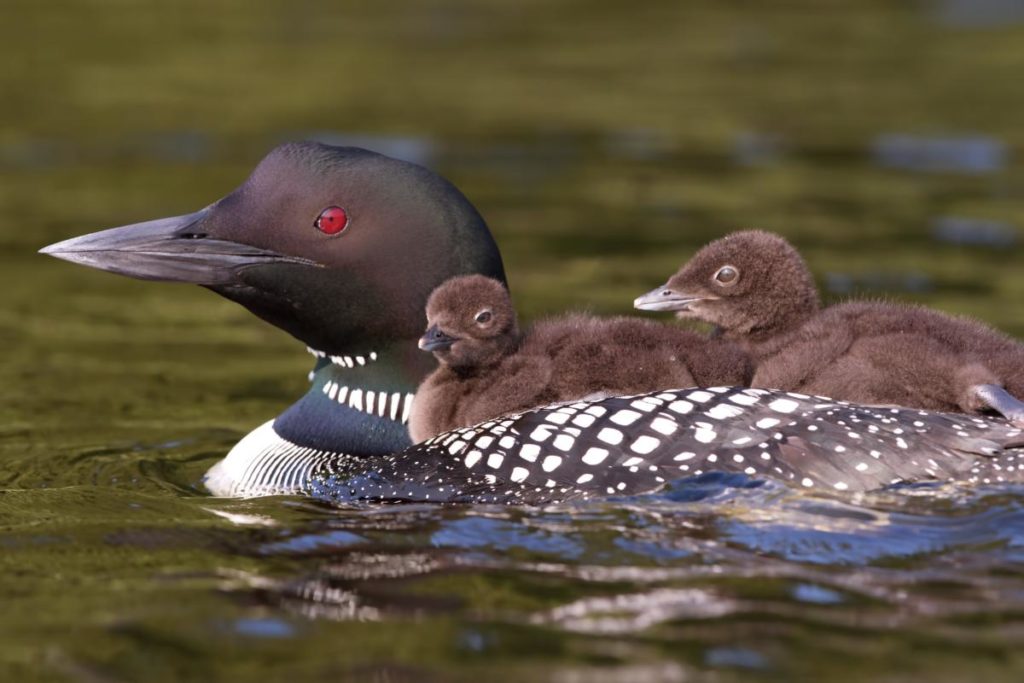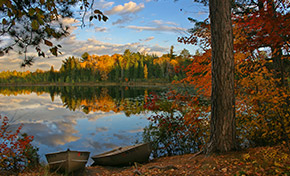MN Loon Country: Loons Nest in the Summer on Sturgeon Lake
Right on schedule, the loons begin repopulating the northern Minnesota lakes when spring weather hits. On Sturgeon Lake, we welcome flocks as soon as enough ice melts. Loon Country offers compelling waterfront real estate for vacation home buyers, too.
Captivating loon families make their summer homes on Sturgeon Lake in eastern Minnesota. This is Loon Country in all its glory. It doesn’t take long to spot their nuptial plumage, dramatic black and white markings coupled with intense red eyes. The beautiful creatures raise families in the rushes and natural shorelines.
Sounds of Loon Country
This is loon country. Approximately 12,000 common loons return to our Minnesota lakes every summer. From our decks, piers, and kayaks, we observe loons out on the lake fishing. Fortunately for residents of Sturgeon Lake, loons are loyal to their chosen lakes.
Loons add a magical note to our Minnesota lake properties. We hear their mellow wails and cries from open windows. Their echoing sounds resound across the waters at sunset. Area landowners expect these almost exotic birds to arrive every spring.
Watching the Loon Families on Minnesota Lakes
Loons focus on pairing up to raise families. Minnesota lakes offer the undisturbed shorelines necessary for nesting sites. You might get a glimpse at out of the way nooks and crannies around the lake.
Most often, loons lay 1-2 eggs per pair, hatching 1-2 chicks 24 hours apart. The little chicks establish a pecking order to improve their survival rates. Stronger young loons usually dominate over the more vulnerable. Very soon, the tiny chicks leave the nest to learn how to swim and fish.
Interestingly, if a brood fails, the female loon may re-nest with another adult male bird later in the season. Loons may also switch partners from year-to-year.
Swimming, Diving and Flying Loons
A bit clumsy on land, the water creatures excel in the water. Thanks to their solid bones, their heavy bodies are perfect for diving. Usually, they go under for about a minute. If disturbed, the common loon can remain underwater for 10 to 15 minutes and dive to 90-foot depths.
The extra weight makes flying more difficult. That is why you will see them running on the water, gaining speed to take off. Once airborne, loons reach speeds up to 90 miles an hour.
What Do Loons Eat?
Loons frequent Minnesota lakes to enjoy prolific fish and rich nourishment. Sturgeon Lake features abundant smaller fish (5-7 inches) with perch, suckers, bullheads, sunfish, and minnows for starters. Loons also eat larger fish and a variety of amphibians, crustaceans, and invertebrates.
To discover these and more loon habits, researchers often apply colored tracking bands. You might notice the bands on a loon’s left leg.
Loon Migration Patterns
Common loons migrate long distances from the clear, inland lakes of the upper Midwest. They find milder climates during winter. So, they leave their summer lake homes and travel east, south, or southwest. From Minnesota, they make their way through the Great Lakes region to the Atlantic Ocean. Others travel down the Mississippi River to the Gulf of Mexico. If leaving western Minnesota lakes, the loons may travel south to warmer lakes in Nevada.
Interested in a Minnesota Lake Home?
Is it time for you to invest in a Minnesota lake home? Join the many year-round residents or make this your weekend campground. Call Vern C. Anderson II, GRI Timber Ghost Realty, Sturgeon Lake, MN (218) 522-0301.





